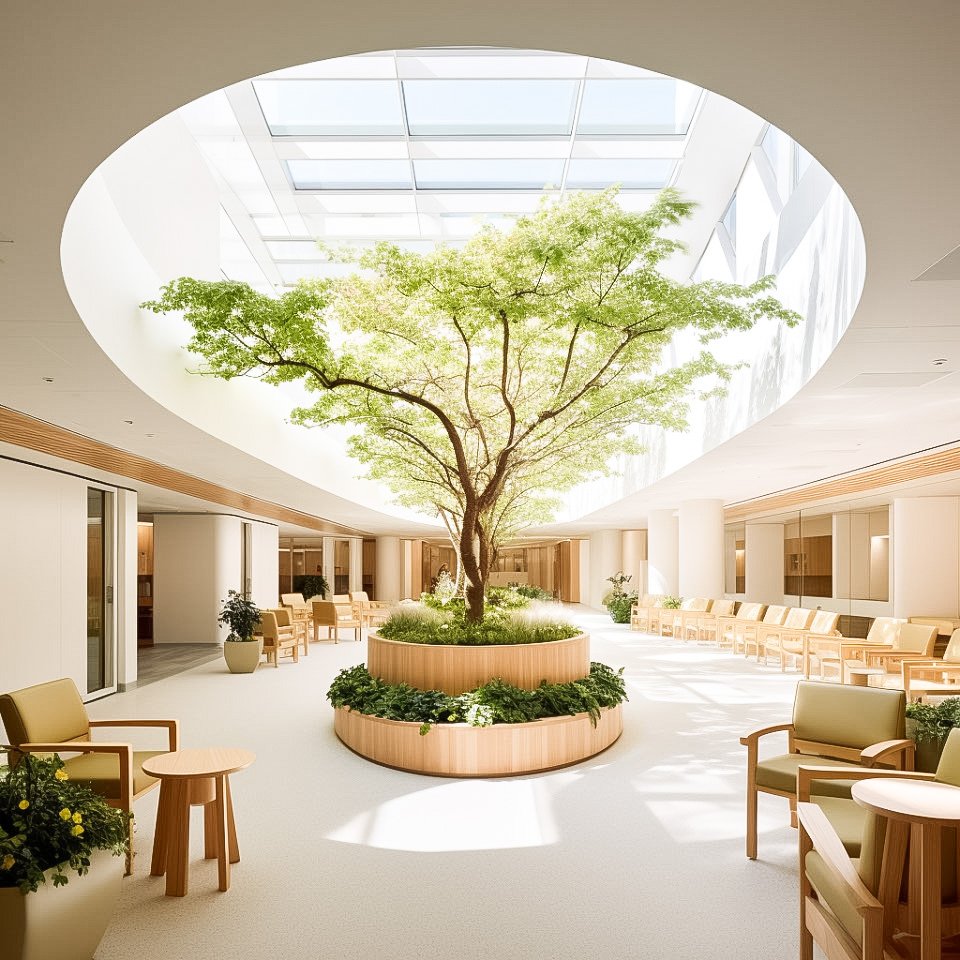Back to the Roots: How WELL accreditation refocuses designers and engineers
How WELL Accreditation Reminds Interior Designers, Architects, and Engineers of Their Core Purpose
The practice of interior design, architecture, and engineering is far more than the mere arrangement of physical spaces. It is an art, a science, and a business that encompasses creative, technical, sustainable, and functional solutions tailored to the built environment. Professionals in these fields have a responsibility to create spaces that consider process and strategy, prioritize well-being, safety, and health, and make informed decisions about style and aesthetics. While these considerations are embedded in the profession, the WELL Building Standard serves as a reminder of the essence of designing and brings us back to the root of space and what it should provide.
At its core, the act of designing is about creating spaces that serve the needs and enhance the lives of those who inhabit them. The WELL Building Standard reminds us of this fundamental purpose. It emphasizes the importance of creating environments that not only fulfill functional and aesthetic needs but also promote the overall well-being of the occupants. This perspective, which considers the holistic needs of individuals and communities, is a natural extension of the profession's mandate to prioritize well-being, safety, and health.
The following are five compelling reasons why interior designers, architects, and engineers should consider becoming WELL Accredited Professionals.
1. Enhancing Professional Expertise
Interior designers and architects who become WELL Accredited Professionals (WELL AP) gain a deep understanding of health and wellness principles that can be applied to built environments. This specialized knowledge allows them to design spaces that are not only aesthetically appealing but also promote physical, mental, and emotional well-being. By acquiring the WELL AP credential, professionals in the design field can augment their expertise and create spaces that prioritize the overall well-being of occupants.
2. Fostering Interdisciplinary Collaboration
The WELL Building Standard encompasses a wide range of fields, from air and water quality to ergonomics and biophilic design. As a WELL AP, interior designers and architects can effectively collaborate with experts from diverse fields, including engineers, environmental scientists, and health professionals. This interdisciplinary approach leads to holistic and well-rounded project outcomes that consider multiple aspects of wellness in the built environment.
3. Promoting Professional Growth
Becoming a WELL AP opens doors to continuous learning and professional development in the fast-evolving field of wellness in the built environment. With access to the latest research and trends, WELL AP professionals can stay at the forefront of the industry and contribute to its growth. Additionally, the commitment to ongoing professional development can be personally fulfilling and career-enhancing, providing opportunities for recognition and advancement in the field.
As the demand for health and wellness-focused spaces continues to rise, interior designers and architects with WELL AP credentials will be well-positioned to meet this demand and shape the future of the built environment. The credential offers a unique opportunity to make a meaningful impact on people's lives by creating spaces that promote well-being, foster productivity, and enhance overall quality of life.
3. Differentiating in a Competitive Market
In the competitive world of design and architecture, standing out is crucial. The WELL AP credential serves as a distinctive mark of expertise in health and wellness-focused design. It distinguishes professionals from their peers and positions them as leaders in the rapidly growing field of sustainable and human-centric design. With the WELL AP credential, designers and architects can set themselves apart and demonstrate their commitment to creating spaces that positively impact the lives of occupants.
4. Meeting Client Demands
As awareness of the importance of well-being grows, many clients — including corporations, developers, and homeowners — are seeking to integrate wellness elements into their spaces. WELL AP professionals can proficiently meet these demands by designing environments that prioritize health and well-being. Whether it's creating an office that promotes employee productivity and well-being or a home that supports healthy living, a WELL AP professional can deliver solutions that align with clients' wellness objectives.
By reintroducing the focus on the well-being of the occupants, the WELL Building Standard reconnects professionals with the essence of their roles. It is a timely reminder of why we design, and it brings us back to the root of the space and what it should provide. It's a call to embrace a more holistic approach that considers not only the technical and functional aspects of design but also the human dimension.


